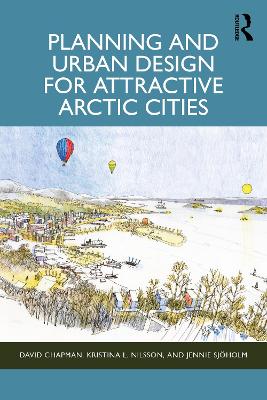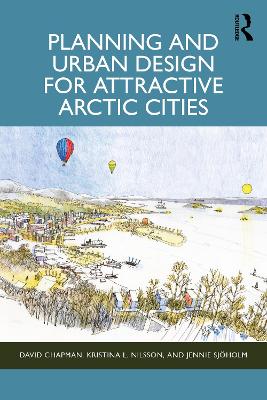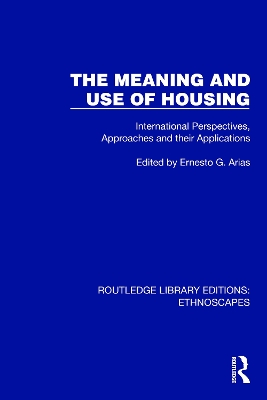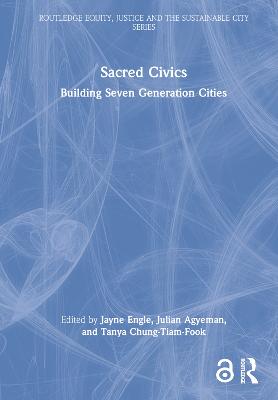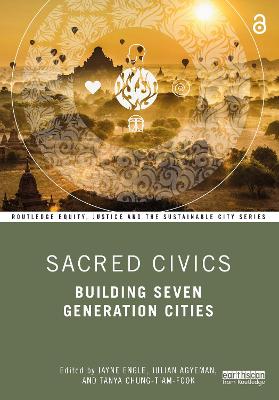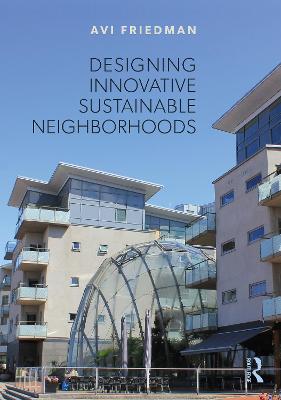EDRA 1
 portes grátis
portes grátis
EDRA 1
Proceedings of the 1st Annual Environmental Design Research Association Conference
Sanoff, Henry; Cohn, Sidney
Taylor & Francis Ltd
09/2022
380
Mole
Inglês
9780367435448
15 a 20 dias
710
Descrição não disponível.
Preface Biographical Sketches Part I: Introduction
1 An Approach to the Study of Environmental Quality, Amos Rapoport
2. Environmental Humanism Through Robots, Nicholas Negroponte
3. Architectural Manipulation of Space, Time and Gravity, James Fitch
Part II: Performance Systems
4. Residential Space Systems: Generic and Specific Concepts of Urban Structural Analysis, Peter Batchelor
5. Planning for Community Mental Health Centers: The Performance Approach, Michael Brill and Richard Krauss
6. Patterns and Semiology, Francis Duffy and James Friedman
7. Chairman's Comments, Stuart Silverstone
Part III: Environmental Attributes
8. Visual Determinants of Preferences for Dwelling Environs, Raymond Craun
9. A Study of Meaning and Architecture, Robert Hershberger
10. The Quality of Visual Residential Environments, George Peterson
11. Chairman's Comment, Richard Wilkinson
Part IV: Environmental Quality
12. Switching on the Seven Lamps, William Mitchell
13. Problem Solving in the Spatial Environment, Fred Steel
14. Chairman's Comments, Richard Wilkinson
Part V: Problem Solving Methods in Design
15. Theoretical Premises of Problem Solving, Charles Eastman
16. Visual Information Processing in Problem Solving Situations, Joseph Ballay
17. Towards the Computerization of Architecture: A Theoretical Framework and a Partial Computer Program, Isao Oishi
18. Fundamental Description of a Floor Plan Design Program, John Grason
19. Chairman's Comments, Charles Eastman
Part VI: Human Responses to the Environment
20. Analytical Sampling for Design Information: A Survey of Housing Experiences, William Michelson
21. Toward a Theory of Accessibility Acceptance, Richard Worrall, George Peterson and M.J. Redding
22. Chairman's Comments, Ray Studer
Part VII: Environmental Perception
23. Towards a Stimulus-Response Theory of Environmental Design, Stuart Rose
24. A Study of Human Response to Selected Roadside, Gary Winkel, Roger Malek and Philip Thiel
25. Chairman's Comment, Dan Carson
Part VIII: Attitudinal Responses to the Environment
26. Behavioral Design Criteria in Student Housing, Wolfgang Preiser
27. Chairman's Comment, Man Sawhney
Part IX: Models in Planning
28. Locational Decisions: Objectives and Consequences, Wilferd Holton, Bernard Kramer, Peter New, Grazia Marzot
29. A Decision Agent Modeling an Approach to Planning for Urban Residential Growth, Edward Kaiser
30. Chairman's Comments, George Hemmens
Part X: Decision Models
31. Toward a Theory of Technical Descriptions for Architecture, Charles Burnette
32. Matrix Method for Grouping an Interrelated Set of Elements, William Miller
33. Modelling the Activity System, Donald Watson
34. Chairman's Comments, Murray Milne
Part XI: Participatory Planning
35. The Community Development Workshop, Ralph Brill, Eric Castro and A.J. Pennington
36. Identifying Community Leaders, Henry Burgwyn
37. Negotiate: An Experimental Planning Game, David Godschalk
38. Chairman's Comments, Barry Jackson
Part XII: Design Education
39. An Experimental Approach to the Study of Critical Judgement, John Peterson and Leonard Lansky
40. Towards an Experimental Program in Design Education, George Bireline
41. Chairman's Comments, Marvin Sevely
1 An Approach to the Study of Environmental Quality, Amos Rapoport
2. Environmental Humanism Through Robots, Nicholas Negroponte
3. Architectural Manipulation of Space, Time and Gravity, James Fitch
Part II: Performance Systems
4. Residential Space Systems: Generic and Specific Concepts of Urban Structural Analysis, Peter Batchelor
5. Planning for Community Mental Health Centers: The Performance Approach, Michael Brill and Richard Krauss
6. Patterns and Semiology, Francis Duffy and James Friedman
7. Chairman's Comments, Stuart Silverstone
Part III: Environmental Attributes
8. Visual Determinants of Preferences for Dwelling Environs, Raymond Craun
9. A Study of Meaning and Architecture, Robert Hershberger
10. The Quality of Visual Residential Environments, George Peterson
11. Chairman's Comment, Richard Wilkinson
Part IV: Environmental Quality
12. Switching on the Seven Lamps, William Mitchell
13. Problem Solving in the Spatial Environment, Fred Steel
14. Chairman's Comments, Richard Wilkinson
Part V: Problem Solving Methods in Design
15. Theoretical Premises of Problem Solving, Charles Eastman
16. Visual Information Processing in Problem Solving Situations, Joseph Ballay
17. Towards the Computerization of Architecture: A Theoretical Framework and a Partial Computer Program, Isao Oishi
18. Fundamental Description of a Floor Plan Design Program, John Grason
19. Chairman's Comments, Charles Eastman
Part VI: Human Responses to the Environment
20. Analytical Sampling for Design Information: A Survey of Housing Experiences, William Michelson
21. Toward a Theory of Accessibility Acceptance, Richard Worrall, George Peterson and M.J. Redding
22. Chairman's Comments, Ray Studer
Part VII: Environmental Perception
23. Towards a Stimulus-Response Theory of Environmental Design, Stuart Rose
24. A Study of Human Response to Selected Roadside, Gary Winkel, Roger Malek and Philip Thiel
25. Chairman's Comment, Dan Carson
Part VIII: Attitudinal Responses to the Environment
26. Behavioral Design Criteria in Student Housing, Wolfgang Preiser
27. Chairman's Comment, Man Sawhney
Part IX: Models in Planning
28. Locational Decisions: Objectives and Consequences, Wilferd Holton, Bernard Kramer, Peter New, Grazia Marzot
29. A Decision Agent Modeling an Approach to Planning for Urban Residential Growth, Edward Kaiser
30. Chairman's Comments, George Hemmens
Part X: Decision Models
31. Toward a Theory of Technical Descriptions for Architecture, Charles Burnette
32. Matrix Method for Grouping an Interrelated Set of Elements, William Miller
33. Modelling the Activity System, Donald Watson
34. Chairman's Comments, Murray Milne
Part XI: Participatory Planning
35. The Community Development Workshop, Ralph Brill, Eric Castro and A.J. Pennington
36. Identifying Community Leaders, Henry Burgwyn
37. Negotiate: An Experimental Planning Game, David Godschalk
38. Chairman's Comments, Barry Jackson
Part XII: Design Education
39. An Experimental Approach to the Study of Critical Judgement, John Peterson and Leonard Lansky
40. Towards an Experimental Program in Design Education, George Bireline
41. Chairman's Comments, Marvin Sevely
Este título pertence ao(s) assunto(s) indicados(s). Para ver outros títulos clique no assunto desejado.
Young Man;Environmental Design;DMG.;Space;Superimpose;Spatial Design;Follow;Environmental Humanism;Environmental Design Research;Environmental Quality;Adjective Pairs;Residential Space Systems;Human Problem Solvers;Urban Structural Analysis;Drexel Institute;Planning;Dual Graph;Community Planning;Activity Systems;Semiology;Environmental Competence;Mental Health Centers;Model Cities Program;Dwelling Environs;Mental Health;Visual Residential Environments;Public Transportation;Spatial Environment;Semantic Differential Technique;Design Information;Semantic Differential;Housing Experiences;Spatial Problem Solving;Environmental Perception;Environmental Design Education;Models in Planning;Private Open Space;Urban Residential Growth;Base Diagonal;Architecture;Predictive Dynamic Model;Matrix Method;Balancing Profile;Participatory Planning;Computer Based Simulation Games;Community Development Workshop;Floor Plan Design;Community Leaders;Rational Planning Model;Design Education;Urbanisation;Optimum environment;Problem-solving environmental design;Environmental design research association
Preface Biographical Sketches Part I: Introduction
1 An Approach to the Study of Environmental Quality, Amos Rapoport
2. Environmental Humanism Through Robots, Nicholas Negroponte
3. Architectural Manipulation of Space, Time and Gravity, James Fitch
Part II: Performance Systems
4. Residential Space Systems: Generic and Specific Concepts of Urban Structural Analysis, Peter Batchelor
5. Planning for Community Mental Health Centers: The Performance Approach, Michael Brill and Richard Krauss
6. Patterns and Semiology, Francis Duffy and James Friedman
7. Chairman's Comments, Stuart Silverstone
Part III: Environmental Attributes
8. Visual Determinants of Preferences for Dwelling Environs, Raymond Craun
9. A Study of Meaning and Architecture, Robert Hershberger
10. The Quality of Visual Residential Environments, George Peterson
11. Chairman's Comment, Richard Wilkinson
Part IV: Environmental Quality
12. Switching on the Seven Lamps, William Mitchell
13. Problem Solving in the Spatial Environment, Fred Steel
14. Chairman's Comments, Richard Wilkinson
Part V: Problem Solving Methods in Design
15. Theoretical Premises of Problem Solving, Charles Eastman
16. Visual Information Processing in Problem Solving Situations, Joseph Ballay
17. Towards the Computerization of Architecture: A Theoretical Framework and a Partial Computer Program, Isao Oishi
18. Fundamental Description of a Floor Plan Design Program, John Grason
19. Chairman's Comments, Charles Eastman
Part VI: Human Responses to the Environment
20. Analytical Sampling for Design Information: A Survey of Housing Experiences, William Michelson
21. Toward a Theory of Accessibility Acceptance, Richard Worrall, George Peterson and M.J. Redding
22. Chairman's Comments, Ray Studer
Part VII: Environmental Perception
23. Towards a Stimulus-Response Theory of Environmental Design, Stuart Rose
24. A Study of Human Response to Selected Roadside, Gary Winkel, Roger Malek and Philip Thiel
25. Chairman's Comment, Dan Carson
Part VIII: Attitudinal Responses to the Environment
26. Behavioral Design Criteria in Student Housing, Wolfgang Preiser
27. Chairman's Comment, Man Sawhney
Part IX: Models in Planning
28. Locational Decisions: Objectives and Consequences, Wilferd Holton, Bernard Kramer, Peter New, Grazia Marzot
29. A Decision Agent Modeling an Approach to Planning for Urban Residential Growth, Edward Kaiser
30. Chairman's Comments, George Hemmens
Part X: Decision Models
31. Toward a Theory of Technical Descriptions for Architecture, Charles Burnette
32. Matrix Method for Grouping an Interrelated Set of Elements, William Miller
33. Modelling the Activity System, Donald Watson
34. Chairman's Comments, Murray Milne
Part XI: Participatory Planning
35. The Community Development Workshop, Ralph Brill, Eric Castro and A.J. Pennington
36. Identifying Community Leaders, Henry Burgwyn
37. Negotiate: An Experimental Planning Game, David Godschalk
38. Chairman's Comments, Barry Jackson
Part XII: Design Education
39. An Experimental Approach to the Study of Critical Judgement, John Peterson and Leonard Lansky
40. Towards an Experimental Program in Design Education, George Bireline
41. Chairman's Comments, Marvin Sevely
1 An Approach to the Study of Environmental Quality, Amos Rapoport
2. Environmental Humanism Through Robots, Nicholas Negroponte
3. Architectural Manipulation of Space, Time and Gravity, James Fitch
Part II: Performance Systems
4. Residential Space Systems: Generic and Specific Concepts of Urban Structural Analysis, Peter Batchelor
5. Planning for Community Mental Health Centers: The Performance Approach, Michael Brill and Richard Krauss
6. Patterns and Semiology, Francis Duffy and James Friedman
7. Chairman's Comments, Stuart Silverstone
Part III: Environmental Attributes
8. Visual Determinants of Preferences for Dwelling Environs, Raymond Craun
9. A Study of Meaning and Architecture, Robert Hershberger
10. The Quality of Visual Residential Environments, George Peterson
11. Chairman's Comment, Richard Wilkinson
Part IV: Environmental Quality
12. Switching on the Seven Lamps, William Mitchell
13. Problem Solving in the Spatial Environment, Fred Steel
14. Chairman's Comments, Richard Wilkinson
Part V: Problem Solving Methods in Design
15. Theoretical Premises of Problem Solving, Charles Eastman
16. Visual Information Processing in Problem Solving Situations, Joseph Ballay
17. Towards the Computerization of Architecture: A Theoretical Framework and a Partial Computer Program, Isao Oishi
18. Fundamental Description of a Floor Plan Design Program, John Grason
19. Chairman's Comments, Charles Eastman
Part VI: Human Responses to the Environment
20. Analytical Sampling for Design Information: A Survey of Housing Experiences, William Michelson
21. Toward a Theory of Accessibility Acceptance, Richard Worrall, George Peterson and M.J. Redding
22. Chairman's Comments, Ray Studer
Part VII: Environmental Perception
23. Towards a Stimulus-Response Theory of Environmental Design, Stuart Rose
24. A Study of Human Response to Selected Roadside, Gary Winkel, Roger Malek and Philip Thiel
25. Chairman's Comment, Dan Carson
Part VIII: Attitudinal Responses to the Environment
26. Behavioral Design Criteria in Student Housing, Wolfgang Preiser
27. Chairman's Comment, Man Sawhney
Part IX: Models in Planning
28. Locational Decisions: Objectives and Consequences, Wilferd Holton, Bernard Kramer, Peter New, Grazia Marzot
29. A Decision Agent Modeling an Approach to Planning for Urban Residential Growth, Edward Kaiser
30. Chairman's Comments, George Hemmens
Part X: Decision Models
31. Toward a Theory of Technical Descriptions for Architecture, Charles Burnette
32. Matrix Method for Grouping an Interrelated Set of Elements, William Miller
33. Modelling the Activity System, Donald Watson
34. Chairman's Comments, Murray Milne
Part XI: Participatory Planning
35. The Community Development Workshop, Ralph Brill, Eric Castro and A.J. Pennington
36. Identifying Community Leaders, Henry Burgwyn
37. Negotiate: An Experimental Planning Game, David Godschalk
38. Chairman's Comments, Barry Jackson
Part XII: Design Education
39. An Experimental Approach to the Study of Critical Judgement, John Peterson and Leonard Lansky
40. Towards an Experimental Program in Design Education, George Bireline
41. Chairman's Comments, Marvin Sevely
Este título pertence ao(s) assunto(s) indicados(s). Para ver outros títulos clique no assunto desejado.
Young Man;Environmental Design;DMG.;Space;Superimpose;Spatial Design;Follow;Environmental Humanism;Environmental Design Research;Environmental Quality;Adjective Pairs;Residential Space Systems;Human Problem Solvers;Urban Structural Analysis;Drexel Institute;Planning;Dual Graph;Community Planning;Activity Systems;Semiology;Environmental Competence;Mental Health Centers;Model Cities Program;Dwelling Environs;Mental Health;Visual Residential Environments;Public Transportation;Spatial Environment;Semantic Differential Technique;Design Information;Semantic Differential;Housing Experiences;Spatial Problem Solving;Environmental Perception;Environmental Design Education;Models in Planning;Private Open Space;Urban Residential Growth;Base Diagonal;Architecture;Predictive Dynamic Model;Matrix Method;Balancing Profile;Participatory Planning;Computer Based Simulation Games;Community Development Workshop;Floor Plan Design;Community Leaders;Rational Planning Model;Design Education;Urbanisation;Optimum environment;Problem-solving environmental design;Environmental design research association

